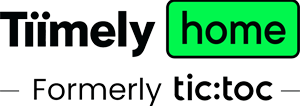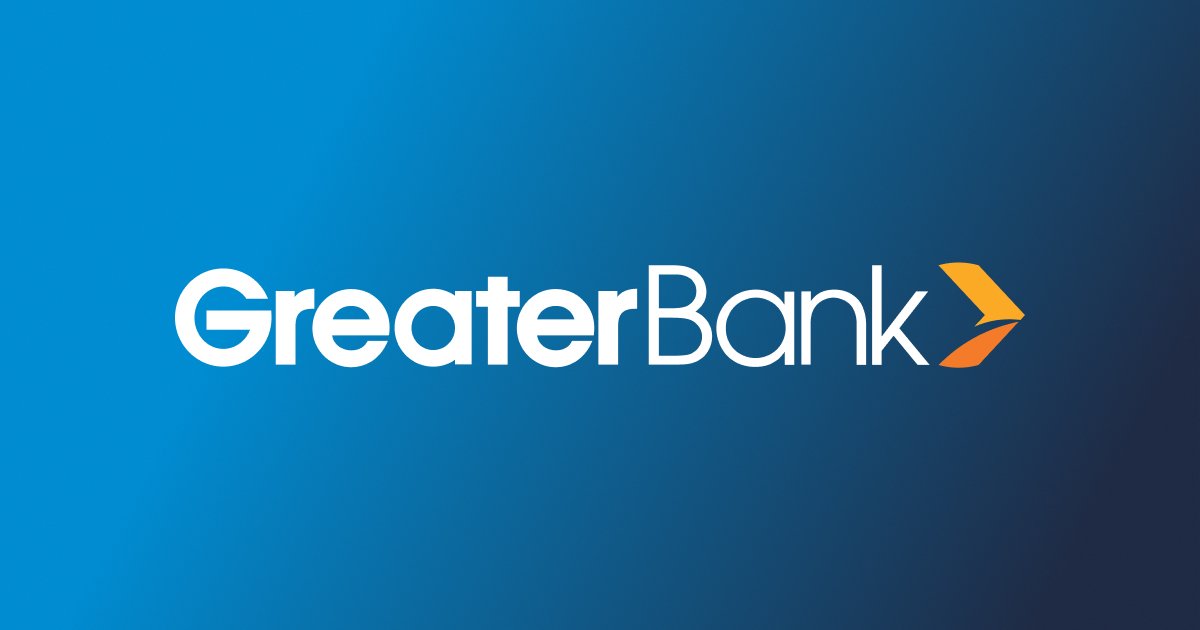Compare Home Loans - Australia
Savrr.com is a trading name of Fair Comparison Pty Ltd. Comparison is powered by Fair Comparison Pty Ltd who don’t compare all providers in the market, or all products of those compared. Fair Comparison does not provide credit assistance or advice and may receive a fee if you click on, apply, or are approved, for a product.
Learn More
- Default
- Comparison Rate
- Advertised Rate
Savrr.com is a trading name of Fair Comparison Pty Ltd. Fair Comparison compares loan products from a range of banks and other financial or credit product providers and does not compare all products in the market or all product features. To filter the results, you will need to enter some basic information which will generate a comparison of products that fall within those parameters. The default ordering of products is based on the Comparison Rate. Fair Comparison do not take into account your objectives, financial situation or needs, or provide advice, assistance, or recommendations.

Unloan - Variable Home Loan
Variable | Owner Occupied | Principal & Interest | LVR up to 80% | Borrowing between $10,000 and $10,000,000 | With Annual Discount
Advertised Rate
Comparison Rate
Repayment
Application Fee
Ongoing Fee

Tiimely Home - Tiimely Own Home Loan
Variable | Owner Occupied | Principal & Interest | LVR up to 90% (with LMI) | Borrowing between $50,000 and $3,000,000
Advertised Rate
Comparison Rate
Repayment
Application Fee
Ongoing Fee

Homestar - Star Gold
Variable | Owner Occupied | Principal & Interest | LVR up to 70% | Borrowing between $250,000 and $2,000,000
Advertised Rate
Comparison Rate
Repayment
Application Fee
Valuation Fee
Ongoing Fee

Homestar - Star Essentials
Variable | Owner Occupied | Principal & Interest | LVR up to 80% | Borrowing between $150,000 and $2,000,000
Advertised Rate
Comparison Rate
Repayment
Application Fee
Valuation Fee
Ongoing Fee

Greater Bank - Great Rate Home Loan
Discount Variable | Owner Occupied | Principal & Interest | LVR up to 80% | Borrowing more than $150,000
Advertised Rate
Comparison Rate
Repayment
Application Fee
Ongoing Fee

Tiimely Home - Tiimely Own Home Loan
Fixed | Fixed for 1 year | Owner Occupied | Principal & Interest | LVR up to 90% (with LMI) | Borrowing between $50,000 and $3,000,000
Advertised Rate
Comparison Rate
Repayment
Application Fee
Ongoing Fee

Reduce - Basic Home Loan
Variable | Owner Occupied | Principal & Interest | LVR up to 80% | Borrowing more than 250,000
Advertised Rate
Comparison Rate
Repayment
Application Fee
Ongoing Fee

HSBC - Home Value Loan
Variable | Owner Occupied | Principal & Interest | LVR between 60% and 70% | Borrowing between $50,000 and $15,000,000
Advertised Rate
Comparison Rate
Repayment
Application Fee
Ongoing Fee

Qudos Bank - No Frills Home Loan
Variable | Owner Occupied | Principal & Interest | LVR up to 70% | Borrowing more than $150,000
Advertised Rate
Comparison Rate
Repayment
Application Fee
Ongoing Fee

Homestar - Star Classic
Variable | Owner Occupied | Principal & Interest | LVR up to 80% | Borrowing between $150,000 and $2,000,000
Advertised Rate
Comparison Rate
Repayment
Application Fee
Valuation Fee
Ongoing Fee
Home Loans Guide
For most of us, buying a home is the most expensive transaction we’ll make. So, choosing a home loan can be stressful. But it shouldn’t be confusing. That’s why we put this guide together. It’s jam-packed with information to help you compare a range of home loans and pick a suitable one that could help you buy your dream home or investment property.
What is a home loan?
A home loan is a credit product that enables you to buy a property with money you don’t actually have. It’s a good thing home loans are available because without them, many of us would never be able to buy a home.
While they’re called home loans, they can be used to buy land or a property with a building on it. And that building could be a freestanding house, apartment, unit or some other kind of dwelling. You can use a home loan to buy a home you’ll live in (your principal residence), a holiday home, or an investment property (such as a rental for someone else to live in).
Home loan features
Home loans generally consist of the following elements:
- The principal or loan amount – this is the amount of money you’ll borrow to pay for the property you’re buying.
- Various standard fees and costs – as with any other service, you have to pay for a home loan. Part of the way you pay for it is through a variety of fees and costs. The fees will vary from lender to lender, but you might be charged basic fees like an application fee, an account-keeping fee or other costs such as lenders mortgage insurance (which is typically charged if you’re borrowing more than 80 per cent of the value of a property and there is no guarantor).
- Interest – your lender is taking on a risk and a range of expenses by lending you money, so it’ll charge you a regular fee for as long as you’re borrowing its money. The fee will be a percentage of the balance of your loan (the money you haven’t yet repaid). This fee is called interest.
- Penalty fees – along with paying fees for the privilege of taking out a loan, you may also be charged fees if you fail to abide by the terms and conditions of your loan. For example, if you’re late paying a mandatory repayment, you could be charged a fee. Some fixed loans may also include fees if you repay your loan early or make extra repayments.
Some loans may also come with one or more special features, such as:
- Redraw facility – a redraw facility enables you to withdraw extra repayments you’ve made if you have unexpected expenses. This may be handy because it means you can make more loan repayments to reduce the interest you owe without worrying that you might regret those payments if an emergency or unexpected opportunity arises.
- Offset account – an offset account is a bank account that’s attached to a loan. When you have money in an offset account, the interest you owe is calculated based on your loan balance (what you haven’t repaid) minus what’s in your offset account. This is handy because it means you can reduce the interest you owe using every spare dollar you have, while retaining complete flexibility to use your money if and when you need to.
- Repayment holiday – some lenders may allow you to take a break from repaying your loan for a specified period of time, usually for financial hardship. This may be handy if you stop working for a while due to illness or an injury. It's important to remember that your loan balance will grow during this time as the interest charges are added to your balance.

Fixed vs variable home loan rates
There are several kinds of home loans, but all fall into one of two categories: fixed or variable rate home loans. (The exception to that rule is a split loan which applies a variable interest rate to part of the balance and a fixed interest rate to the rest)
To understand the difference between the two, you first need to understand how the Reserve Bank of Australia (RBA) affects interest rates in Australia.
The RBA generally meets 11 times a year (every month except in January). At the meetings, it sets the official cash rate, which along with other market factors, impacts the interest rate at which financial institutions borrow from each other. The RBA usually changes the cash rate in response to changing market conditions, like inflation and deflation.
Lenders often borrow money in order to offer you a loan. So, for them to make a profit, they charge an interest rate that’s higher than what they’re paying. As a result, lenders can create home loans with interest rates that they can change at any time (with a bit of notice to customers). Such loans are called variable rate loans.
Having your interest rate suddenly change on you may be a challenge for some borrowers. After all, it’s pretty hard to budget for the future if you don’t know what your expenses are going to be. But the situation can be more intimidating with home loans compared to other kinds of loans because most home loans have a period of 25-30 years. Can you imagine how much interest rates could change over 30 years?
Most lenders offer an alternative type of loan product with an interest rate that doesn’t change at all for a fixed period (usually between two and five years). That type of loan is called a fixed rate home loan.
How to calculate how much interest you’d have to pay
When you take out a home loan, your lender will tell you how much your repayments will be. But if you want to have an idea before you apply, there are numerous calculators on the web that will help do the (sometimes very complicated) maths for you and estimate the interest.

How much you need to save for a home deposit
Deposit requirements vary between lenders. Saving a deposit of at least 20 per cent of the purchase price of the property could save you from having to pay lenders mortgage insurance. And many lenders require you to have at least a 20 per cent deposit. However, some may require as little as 5% depending on the circumstances.
Apart from saving up a percentage of the purchase price of a property, you may also need to save enough to cover other costs associated with buying a house. Those costs might include:
- Stamp duty, which is a government tax (however some first home buyers may be eligible for a partial or full waiver)
- Removal costs
- Fees to cancel utilities, internet and phone in your current home and get them connected at your new home
- Building and pest inspection for the home you’re buying
- Conveyancing fees (generally used to help transfer the property title into your name)
- Home insurance (your lender will usually require this)
How much you can borrow with a home loan
Only the lender that approves your loan application can tell you exactly how much they’re willing to lend you (and different lenders might be willing to offer you different amounts). But you can get a good estimate by using any of the online borrowing power calculators published by banks and other lenders.
Factors that could affect how much you can borrow include:
- How many people are applying for the loan (is it just you, or are you applying with a partner or even several friends?)
- Whether you have any dependents (children or adults who are financially reliant on you)
- Whether you’re going to live in the home or buy it as an investment (investment loans generally have higher interest rates and may offer lower loan amounts)
- Whether you’re buying an existing home or will build
- The state you’re buying in (fees vary across the states and territories, as does the level of risk to the lender)
- Your income and employment type
- Your expenses
- Any debts you may already have (like car loans and credit cards)
- Your credit score
- Your savings and credit history
- The value of the property
How to apply for a home loan
The process of applying for a home loan is often fairly straightforward, even if it’s not necessarily quick or easy. First, you’ll fill in an application. As part of that process, you’ll need to provide ID to prove who you are, as well as proof of your income. You’ll also have to provide details of your expenses and dependents. Depending on your situation, you might also need to provide additional documents like a first home buyer grant application and/or documentation from a guarantor if you’re having someone acting as guarantor for the loan.
If you're refinancing to a better rate or a more suitable home loan you are likely to be asked for information relating to the property, along with the details of the existing mortgage.
Then there will be lots of paperwork to sign and other things to organise, as you’ll be organising your home loan at the same time as organising settlement of your home. So, your conveyancer will need to talk to your lender and vice versa.
One of the easiest ways to start the process is to get an idea of your borrowing power and start comparing a range of home loans. A home loan manager, consultant at the lender or mortgage broker may be able to assist with the process.
What is the best home loan?
Because of the variety of home loans available and the fact everyone is different, there’s no one best home loan out there.
All home loans have either fixed or variable interest (or a combination of both, which is also known as a split), but there are different types of loans within those categories. For instance, there are loans specifically for first home buyers and others for investors. And there are loans where you begin paying off the principal immediately and others where you start by only paying interest for a while. On top of that, some loans have redraw facilities, some have offset accounts, some have other special features and special offers and others are very ‘no frills’.
So, one way to help is to compare the different types of loans and pick the class of loan that best suits your situation. Once you’ve done that, you can compare a range of home loans to pick a suitable one for your needs.
Below, you’ll find a simple method to help the process of comparing home loans. We’ve also published dedicated guides for each type of home loan. Once you know which type of home loan will work best for you, you can couple the below with the additional questions in the class-specific guides to produce an easy-to-use guide for comparing home loans.

Suggested questions to ask when comparing home loans
- What is the interest rate?
- What is the comparison rate?
- Is the interest rate fixed or variable? Or split?
Compare home loans like a pro
Answering these general questions could help you get a better understanding of the type of home loan you are looking for:
- Why are you buying a property? Is it to live in (this is referred to as an owner-occupier home), to use as a holiday home or so you can generate rental income? There may be a loan type that’s geared to your purpose.
- Is this going to be your first home? If so, there may be loans specifically for first home buyers.
- Do you think the cash rate will go down, up, or stay the same? This may impact whether you decide to choose a fixed rate, variable rate or split rate home loan.
- Do you have good reason to believe you will be able to make additional repayments throughout the life of the loan? If so, this might influence the type of loan you choose.
- Initially, how much can you pay each month in repayments?
- Are you buying an existing home or building a new one? Some lenders offer different loans for people who are building.
- In the beginning, do you plan to pay principal and interest repayments or interest only repayments?
- How much is the application fee?
- Will the lender require you to pay lenders mortgage insurance?
- What regular fees or other loan costs will you be charged?
- Is there an early repayment fee?
- What is the late payment fee?
- Are there any other ad hoc fees?
- Does the lender offer any perks? (E.g. the flexibility to redraw repaid funds)
- Based on how much you want to borrow, how much you can repay each month, the fees and interest rate, what is the total amount payable to the bank over the term of the loan (the total cost of the loan)?
- How does the bank or lender that’s offering the loan align with your personal values?
Home loan FAQs
Below are some questions you may have about Home Loans.
How much do you need for a home loan deposit?
Generally, you’ll need at least 20 per cent of the property purchase price plus other initial expenses such as stamp duty and conveyancing. However, in some cases you may be able to have a lower deposit, such as 5 per cent.
What is the first home buyer’s grant?
The first homeowner grant was introduced in 2000 to help Australians buy their first home. It’s a national program, administered and paid for by the states and territories (so you may find it referred to by a slightly different name in your area) that will give you a one-off grant if you’re eligible.
Several states also have additional schemes that provide further benefits to eligible people buying their first home. For example, many may waive stamp duty for some purchases.
What is a home loan comparison rate?
A home loan’s comparison rate is intended to give you an estimate of how much a loan will cost you when you take into account interest and other fees. Comparison rates are calculated based on a 25-year loan of $150,000 and include most fees like establishment fees and monthly or annual fees. They don’t include things like late payment fees.
Comparison rates are useful because some loans have lower interest rates than their competitors but charge higher fees to compensate. Before comparison rates were introduced, that meant some people may have ended up paying more for a loan because they saw a lower interest rate.
What does LVR mean for home loans?
LVR stands for loan-to-value ratio. It’s calculated by dividing the amount you need to borrow by the lender’s valuation of the property, and then expressing the result as a percentage. It’s important to note that the calculation relies on what the lender believes the value of the property is not on the sale price of the property. Much of the time those values will be the same, but that’s not always the case.
The LVR is important because lenders will generally require you to pay lender’s mortgage insurance if your LVR is more than 80 per cent and you don’t have a guarantor or access to funding via initiatives such as the First Home Guarantee.
How do you get approved for a home loan?
To be approved for a home loan, you’ll need to submit an application and satisfy your prospective lender that you’ll be able and willing to repay the loan. The lender will also need to be satisfied that they’ll be able to sell the property to recover some of their losses if you don’t repay your loan.
When can you refinance a home loan?
Technically, you can refinance your home loan at any time after you’ve settled the property with the loaned amount. However, depending on the loan you choose there may be break fees to refinance the loan. There can be other fees for switching providers which you should check with your lender.
Refinancing a home loan is usually best done when there’s a clear financial benefit to switching to another loan.
Also, if you’re interested in refinancing because you’re moving to a new property and haven’t yet paid off your existing home loan, you may be able to change this over with your existing lender instead of actually taking out a new loan.
Do you qualify for a lenders mortgage insurance waiver for professionals?

How do you borrow against home equity for a home loan?

Why are bank interest rates different to the RBA cash rate?

Why do interest rates rise with inflation?

Fixed rate home loan vs variable rate home loan

How to refinance a home loan in Australia






